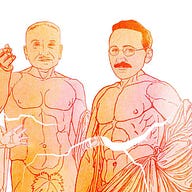Notes
Economics: If you spent any time in Massachusetts cities like Lawrence, Lowell, Waltham, Fall River, and company—the old spindle cities—in the 1970s and 1980s you saw the effects of something very much like the China Shock, although it was the Carolina Shock, as the American textile industry up and moved south. Massachusetts’s regional development authorities could and should have moved faster to make the investments so that new industries could move in and take advantage of the buildings and the workers left behind, but they did move. So why wasn’t American state-level state capacity in the manufacturing belts of the Midwest and the Old South in the 2000s and 2010s a thing?:
Dan Drezner: The Post-Neoliberalism Moment: ‘The costs of the China shock had… to do with… authorities failing to respond…. Some American towns thrived with new investments, while others were "still reeling from a trade shock that ended a decade ago."… The… authors of the original China shock paper… [in] <cfr.org/blog/when-did-china-shock-end… they rejected the idea that admitting China into the WTO was a mistake…. "Quantitative models indicate that U.S. aggregate gains from trade with China are positive"… <reason.com/2024/01/07/the-post-neoliber…>
Dive into your interests
We'll recommend top publications based on the topics you select.

